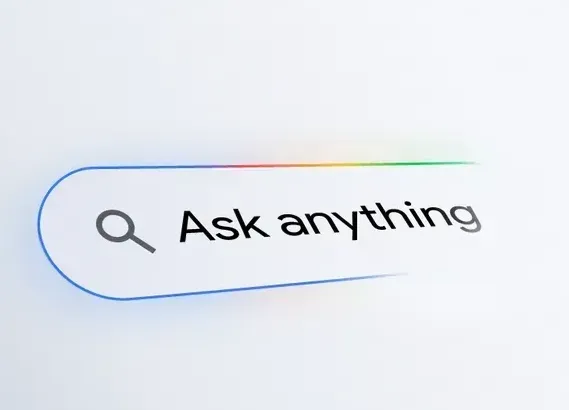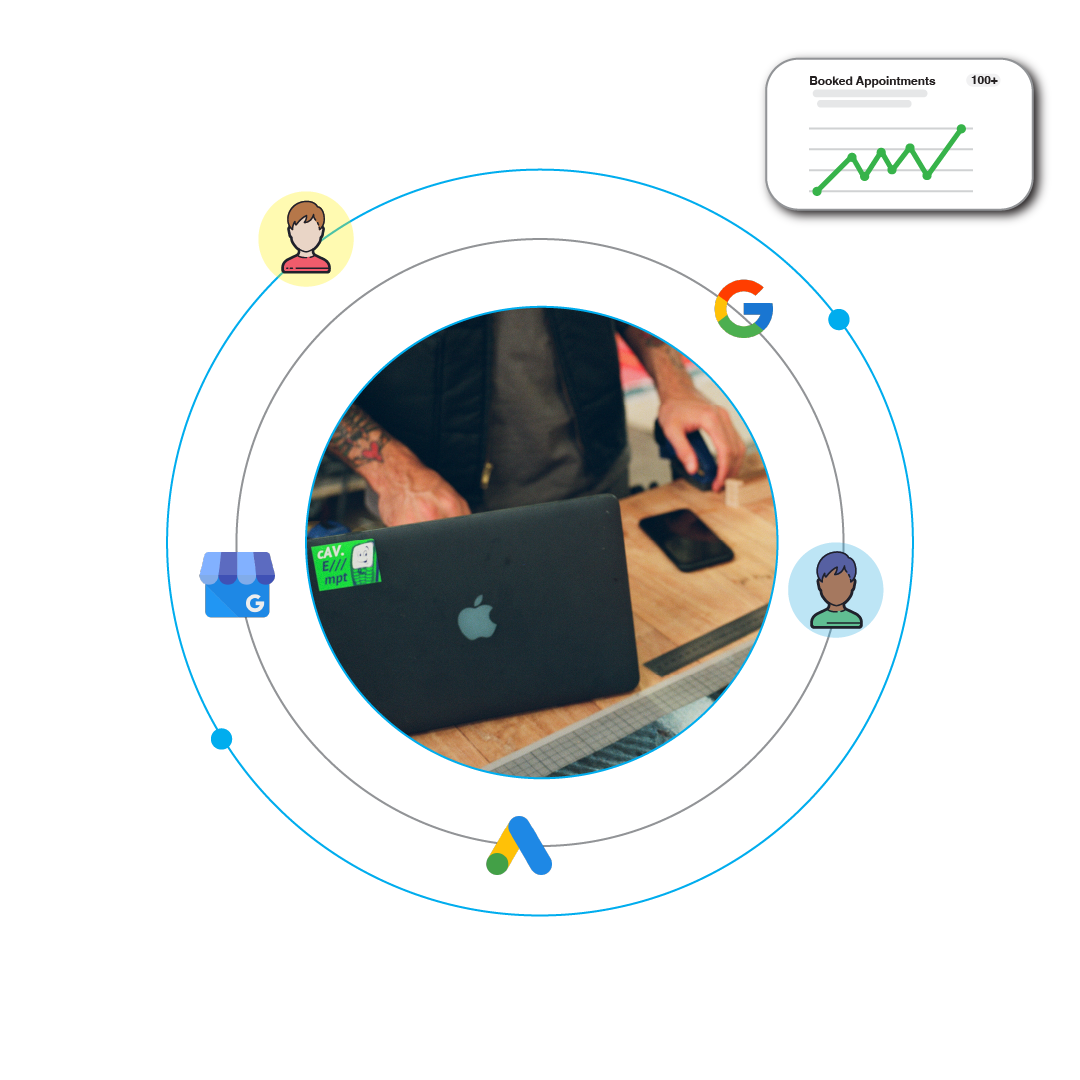
Google SEO Ranking Factors: SEO Clarity
Are you looking for a quick guide to help you better understand SEO?
Are you wanting to use SEO as a tool to grow traffic and expand your business but unsure of what it is and how it works?
This is for you ✅ ✅ ✅
In this guide we take a close look at SEO.
This article contains foundational knowledge that will help you get a better understanding of the mechanics under the hood and practical processes to apply to your site today.
What is SEO?
Search Engine Optimisation refers to the optimisation of your website for search results.
Effectively tuning SEO increases the quality and quantity of organic traffic navigating through your website or landing page.
It’s really important to distinguish that SEO by definition refers to
organic traffic,it’s not referring to any paid advertising.
You’re probably thinking “free traffic, let’s leverage this and drive sales!” and you’ve hit the nail on the head, SEO is a fundamental act that every business needs to be practising daily.
When you consistently work on your search engine optimisation, it results in free, consistent, quality traffic to your business.
To get the most out of SEO you need to have knowledge of how search engines work:
What’s a Search Engine?

Google receives
70,000 search requests every second.
People are searching for things to buy and solutions to their problems literally non stop.
For instance, you can think of the internet as a vault of information the equivalent to a library.
That information is kept on web pages and filed away under URLs.
When you send a query to Google it looks through all the relevant pages and returns the most useful information.
It does this via an algorithm.
This is what
Google says in relation to rankings and the algorithm:
"These ranking systems are made up of not one, but a whole series of algorithms. To give you the most useful information, Search algorithms look at many factors, including the words of your query, relevance and usability of pages, expertise of sources and your location and settings. The weight applied to each factor varies depending on the nature of your query – for example, the freshness of the content plays a bigger role in answering queries about current news topics than it does about dictionary definitions.”
Google is the biggest search engine with most businesses trying to optimize for Google’s search results. There are other search engines like Yahoo and Microsoft’s Bing but Google is the BIG one and has the largest number of daily users..
Check out this chart from 2020:
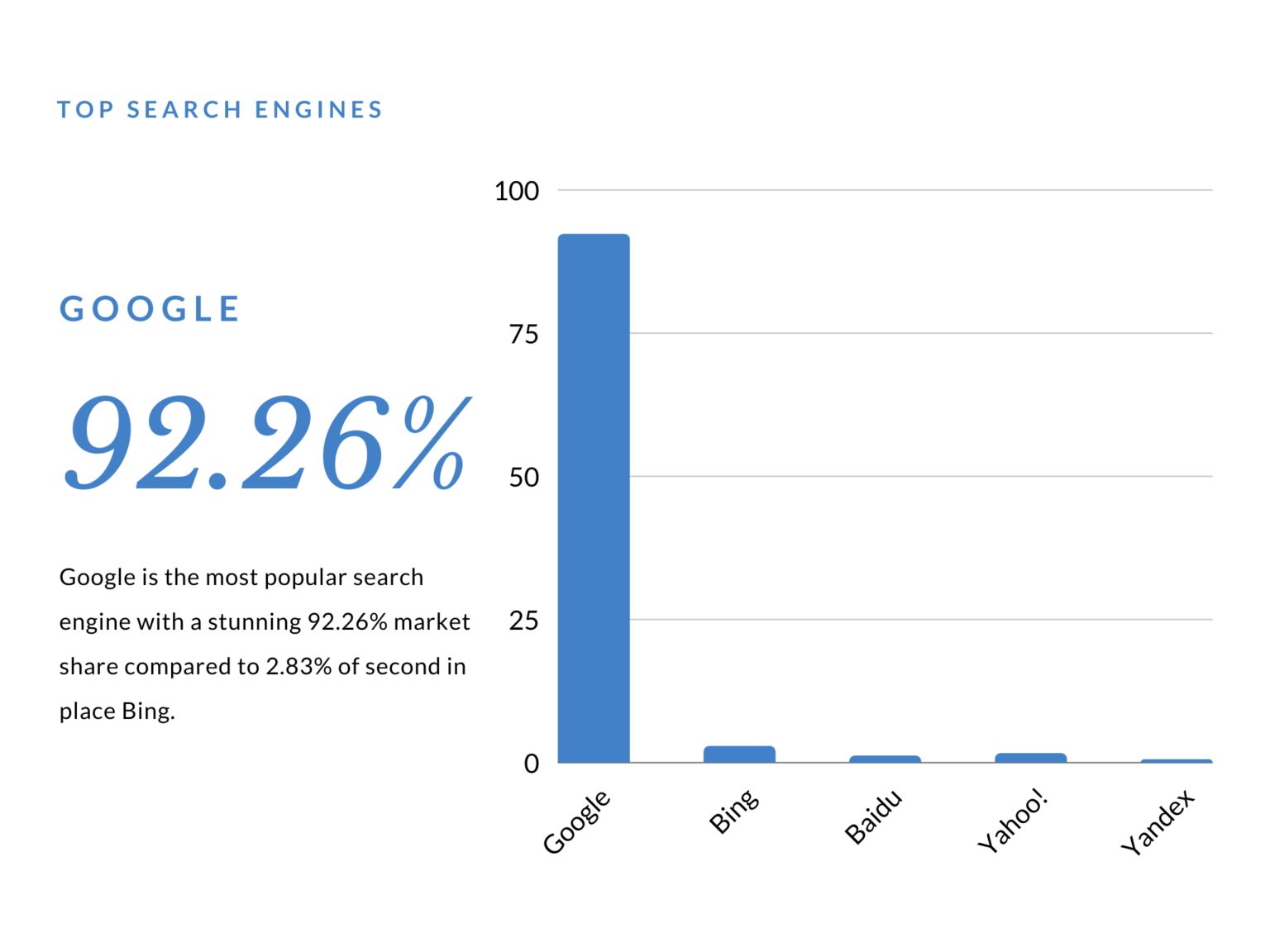

Key takeaways on Googles Algorithm:
- Google looks for pages that have the highest quality content as well as the most relevant information.
- Relevance is determined by “crawling” (scanning and reading) the content on the page and evaluating (algorithmically) whether that content is relevant and of value by the keywords on the page.
- Quality of your content is valued by “backlinks”. Backlinks refers to the amount of external websites linking to your content and using it as a source of information. The quality of the websites linking to your material plays a massive role in this. As an example, let’s say you wrote a blog post on how to run a successful E-Commerce store and Forbes picks it up, in addition a Time writer reads it and they pick it up. Certainly, that results in a domino effect where large media outlets start sharing and linking your article on their pages. Consequently Google would deem this as a reliable and relevant source of information because the websites linking and using your information have large traffic and strong backlinks themselves. On the other hand, if I was to write on the same topic but instead of the big media giants sharing and linking only small independent blogs did.
Google would deem my article less reliable and relevant and score my article lower in it’s search engine results. - Google factors in the way in which people engage with your website and the duration that they are on it.
- Your website’s loading latency and how friendly it is for mobile and tablet.
- The variety in your content.
- How often you update your website.
Look at this visual chart to get a detailed view of the factors and their significance:
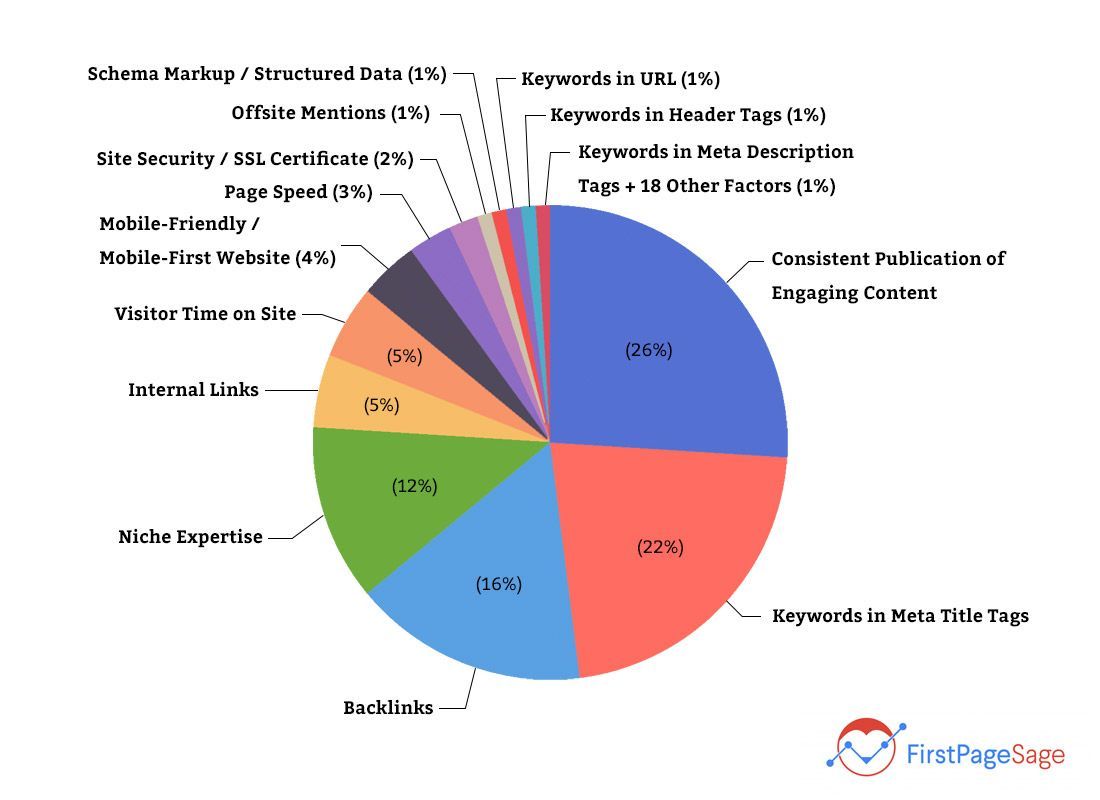

OK… so now that you know the mechanics at play and understand how search engines sift through data, let’s get back to SEO and reverse engineer some clear cut techniques to get you ranking higher on Googles search results page.
SEO To Do’s
1. Register your website on Google
Before you do anything you need to let Google know what you are, what you do and where you’re at. If Google doesn’t know your website and services exist, it won’t be able to rank you.
Firstly, create a
Google Search Console .
Secondly, create a
Google My Business
You can access your sitemap by typing into your web browser:
example.com/sitemap.xml
example.com/sitemap_index.xml
If you’re using WordPress add a SEO plug in and it will generate a sitemap for you.
If you don’t have a sitemap you can generate one
here .
Lodge it with Google and now you’re flying on their radar.
2. Keyword Research
Once you’re registered the next step is to determine keywords.
Identifying the terms and words that people use in your niche that you want your website to rank for in searches.
Think about your potential clients and their:
- Needs and desires
- Type of problems
- Fears
- Interests and goals
- Type of products in your industry that they may be searching for and using frequently.
- Their lingo
As an example let’s say you’re a fitness coach..
You could start with a brainstorm of words that your potential clients or industry personnel would use to search queries:
- Bulk
- Shred
- Intermittent Fasting
- Protein Intake
- Body Composition
Now that you have a few ideas to play with, you can start to expand on these words by typing them into Google and seeing what suggested recommendations it spits back at you.
Alternatively you can download: Ahrefs, Keywords Everywhere – Both chrome extensions useful for finding relevant keywords.
3. On Page SEO
You have your keywords, it’s time to form those words into useful articles that your audience will seek out and engage with.
Remember earlier in the piece we established that Google ranks pages based on how people interact with your site and how long they are on it.
Creating educational content that adds value to your visitor is a very effective way to keep people on your site and have them engage with your page.
For instance, with those keywords listed above, you could write a blog post that talks about bulking, what it is and the purpose behind it.
On a separate blog you could write about protein content for maintenance/cut/bulk.
On a third blog post you can write about a training program for a bulk, something like full body or upper lower split.
You see how all the content is linked. 🔗
This not only keeps your reader interested and engaged it also builds trust and provides value.
In addition it has your reader clicking around the website.
Choose a descriptive URL
For every page you publish you need to have an intuitive
URL that has the keywords matching the search intent.
URLs are like filing names.
It allows Google to find pages easier if they are labelled appropriately.
Let’s take the above example on bulking, the URL would be:
example.com/blog/howtobulk
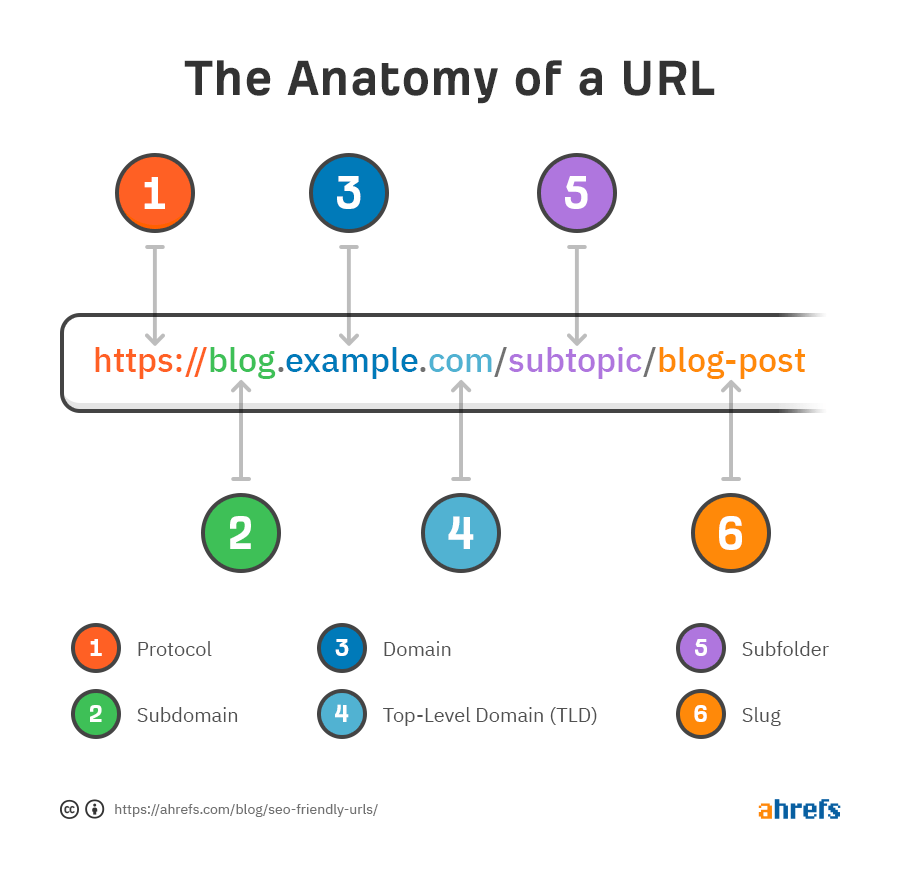
Draw readers in with a immersive meta title (title tag)
The blue clickable links that you see on the results page are called
title tags .
Compelling title tags that are relevant and straight forward work wonders.
When thinking of SEO, think of search intent, put yourself in your readers shoes.
A good habit to get into is putting the year into your title tags, it lets readers know the content is fresh.
When looking at our example the top results always mention something to do with
bulking without putting fat on.
Knowing this we can tailor our tag and go with:
How to bulk properly without getting fat (2021)
Optimise Images
Google Images plays a role in sending traffic to your website.
Images can direct thousands of people to your website if the image is optimised correctly.
How does one optimise image for SEO?
Name them well - Filenames are everything when it comes to SEO. Remember you’re filing things away for Google to find.
Use descriptive alt text. It’s a description not visible on the page. It’s what comes up if the image fails to load. Most websites will have an input field for alt text when you’re uploading an image.
Compress the size. Bigger isn’t always better. In this case lowering your file size will make the image as well as the page load faster. You can do this via Compress .
4. Link Building
Backlinks + Internal links make up 21% of Google’s rank factors when crawling your website.
Backlinks -
are created when one website links to another. You can think of backlinks like a vote. The more backlinks your content generates the more votes it has, the more votes it has from reliable sources the higher the integrity and more trustworthy it is to Google’s algorithm.
This is a very important factor to distinguish because trustworthy backlinks lead to higher Google rankings.
Strong
backlink building is all about adding value, creating link worthy content for readers then reaching out to site owners and editors and giving them a reason to link to one of your pages. Certainly, this is where the quality of your content plays a significant role.
There are a couple of other ways of getting strong backlinks..
Let’s suss them out:
Guest Blogging –
Guest blogging is self explanatory, you approach another website and feature on their page as a guest writer. Above all guest blogging exposes you to a different demographic of readers and allows you to link to your website and social media platforms.
A good way to find guest blogging ideas is to go into Google and type in:
Eg.
“Guess post by”intitle:Bulking
Skyscraper Technique – This technique is all about building better backlinks by finding holes in your competitions content. Find a gap, create more valuable content and as a result ask people to link to your content instead of your competitions.
5. Technical SEO
This is mostly administrative housekeeping but none the less vital for healthy SEO:
Domain Name – Securing a clear and concise domain name that is easy to remember helps greatly. If you’ve already got a domain don’t fret, but if you’re about to register one factor in:
The name of your business
No hyphens or underscores
Short and sweet
Website To Do’s:
- Top Level Domain – This is the last part of the domain: .com, .com.au, .org etc.
This doesn’t count towards Google’s SEO but does make it more memorable for your clients. For instance, the easiest to remember is .com and is the most recognisable and trusted.
- Website Platform – Pick a trusted website platform to host your website on. We went with WordPress because of it’s flexibility and SEO plugins. WordPress requires a web developer to write code because it’s an open source website. On the other hand if you’re looking for templates or are already on Squarespace or Wix, it’s no drama their SEO capabilities are robust and will work for most businesses.
- User Experience – User experience should be at the core of your website. Google looks for pages that create positive user experiences. Here’s a couple of tips to do so:
- HTTPS – Encrypt your website with SSL / TLS to stop personal data susceptible to hacking.
- Sleek Design – Make your website nice and modern and easy to use.
- Mobile Friendly – 61% of website visits in 2020 were accessed through a mobile. Make sure that your website is easy and intuitive for scrolling on a mobile device.
- Adequate font size – Self explanatory, don’t make your readers squint and struggle to read the info.
- Fast loading times – Page speed is a ranking factor. You’ll only be penalised if your page is ultra slow. Compress your pictures and make sure your videos aren’t running ultra HD resolution. Google’s loading times page can be accessed here.
- Avoid pop ups – You don’t like these and neither do your readers. If you want to advertise, make it accessible but not intrusive. Even messaging bots popping up breaks people away from the content. Make it easy for people to navigate your website, don’t make them have to click off the pop ups so many times that they click off your site altogether.
SEO Site Structure:
- Logical Site Structure – A lot of SEO has to do with filing things away properly, categorically naming pictures posts and meta links and creating logical and intuitive navigating through your website for your readers to read and Google to crawl.
Here’s a site structure knocked up by ahrefs:
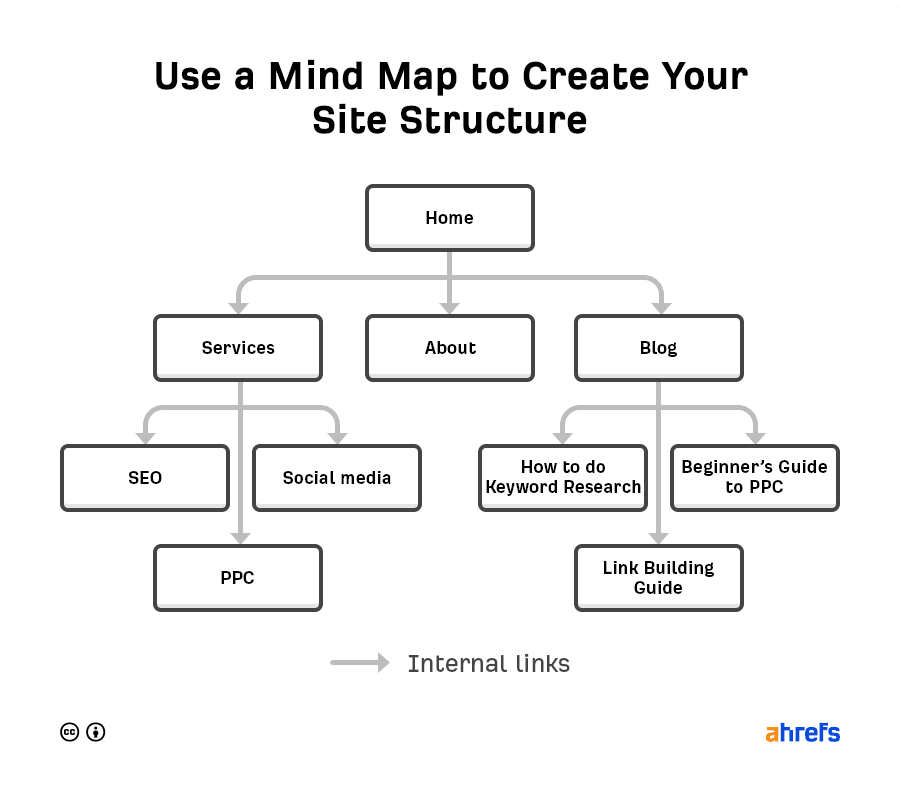
- Logical URL Structure – URL is one of the first things people see and they help distinguish the topic of the page.
For example platforms give you the option of how you structure your URLs: - Plain: example.com/?c=1234
- Day and Name: example.com/2021/05/14/seo-fundamentals
- Month and Name: example.com/05/14/seo-fundamentals
- Numeric: example.com/101
- Post Name: example.com/seo-fundamentals
- If you’re building your site and have the option the most logical choice is Post name.
- If you don’t have the option and you’re trying to configure an existing website, don’t go changing URL structure, it will have a negative effect on SEO and you will do more harm than good.
- Install a trustworthy SEO plugin:
If you’re on a hosted platform like Squarespace SEO is done internally. If you’re on a self hosted platform like WordPress you HAVE to install a plug in.
In short, Yoast is extremely effective and user friendly. Best part it’s free, well the basic features which is all you need to get started.
Final Thoughts
We’ve gone over some fundamentals in relation to SEO, what it is and how to effectively create strategies based on the way the search engine algorithm works.
To sum it up, you can think of Google (or any search engine for that matter) as a librarian and the internet as a library that stores information on webpages.
The librarian’s job will be easier if the webpage is properly indexed with the library (Google) and clearly labelled.
User experience and page layout of your webpage plays a vital role especially making sure that your webpage is mobile / tablet friendly.
Creating VALUE through content is vital for generating free, meaningful and consistent traffic to your webpage.
This not only draws readers/viewers in because it helps educate them and solve their problems but allows you to build authority and expertise as well as create strong backlinks which are the backbone to your website ranking higher on Google’s results pages.
SEO isn’t an overnight miracle, it needs to be maintained and constantly scrutinised and worked upon to generate high yielding results.
To conclude if you implement patience, pragmatism and consistency to your SEO mind frame you will climb higher up Google’s results page and generate long lasting free traffic to your website.
–
Mesmerise is a comprehensive digital marketing agency offering integrated strategies to help small and medium sized businesses grow.
Contact us to get an assessment of your website and a health score of your domain and SEO strategy.

Looking for an
expert SEO Consultant⁉️
At
Mesmerise we’re passionate about helping businesses like yours shine in local search results. Here’s how we can help:
🛜 Website Audit: Comprehensive look at your website, conversion rate optimisation and UX
🔎 SEO Audit: Thorough look at your website on page/off-page SEO, backlinks, technical SEO + more
📍 Local SEO Audits:
We’ll take a deep dive into your current local SEO efforts and find opportunities for improvement
🌟 Review Management:
We’ll help you get more reviews and manage them effectively.
🤝 Your Core Offer:
Help you craft a core offer that cuts through the noise and resonates with your target audience
🔗 Local Link Building:
We’ll use proven tactics to get high-quality local backlinks for your site.
🌪️ Marketing Funnel:
We’ll dissect your campaigns and construct state of the art marketing funnels.
--
If you enjoyed this article and need help implementing local SEO basics, hit the button below!

Want To Build A Better Business, Body & Mind?
I keep it real in this FREE newsletter - arming you with a fresh perspective to build the life you deserve.
"Find your voice and Mesmerise the world."

